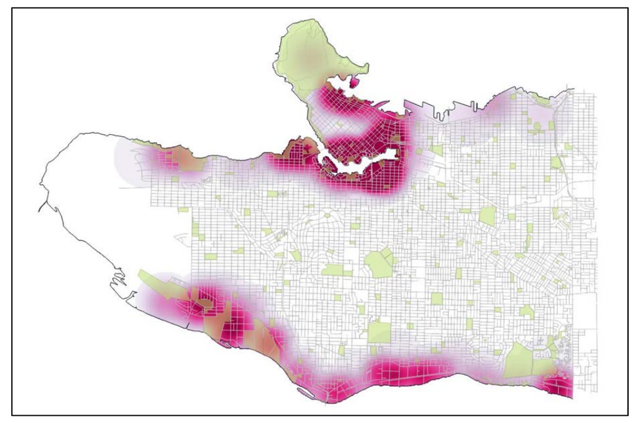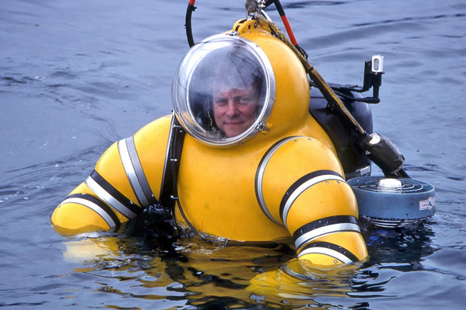|
|

|
  
Features
Update 2020/6/19
Sea Level Rise
THE NEW ATLANTIS - UNDERSEA CITIES COMING SOONER THAN WE THINK?
By Gillian Ward
As more of the world s population is displaced by sea level rise, extreme storms, droughts, fires and inland floods, governments around the world are investing in adaptation and mitigation measures.
WaterToday looks at long term adaptation plans for increasingly severe weather, specifically, alternative habitations adapting for sea level rise.
The Intergovernmental Panel on Climate Change (IPCC) reports that sea level was relatively unchanged for the first two millenia of the common era but has been rising steadily since. As the current trend continues, modeling shows that eight of the ten largest cities in the world will be severely impacted, with loss of infrastructure, industry and homes, not to mention losses to natural ecological and national historic sites.
NASA monitors sea level through its Global Climate Change branch, explaining sea level is rising due to two factors: melting of polar ice sheets and glaciers adds to the fluid volume of our oceans, while the increase in ocean temperature overall causes the volume of water to expand.
The National Ocean and Atmospheric Administration (NOAA) collected data shows that sea level is not only rising but rising at an accelerating rate.
The World Bank Climate Change group published a research report in 2018 on climate induced population migration. The report, Groundswell: Preparing for Internal Climate Migration, considered just three geographic zones, estimating more than one hundred million climate migrants will be forced to leave their homes due to climate crisis: flooded out by sea level rise, driven out by intense storms, or by the desertification of the local environment.
Kanta Kumari Rigaud, lead environmental specialist for the Worl Bank, summarizes the report with three urgent calls to action, to manage the evitable migration within all countries:
1. Cut greenhouse gases now.
2. Embed climate migration in development planning.
3. Integrate climate migration into national development plans.
Adaptations are being considered to allow the world s coastal populations to migrate inland, to build and live in floating cities, or to live in fully submerged colonies below the ocean waves.
With the increasing severity and intensity of land-based storms, monolithic dome structures make the USA s FEMA P-361 code for tornado-safe structures.
WaterToday looked into the reinforced and insulated concrete forms, the very design of which is thought to be the most stable of above ground buildings. While municipalities in tornado alley are embracing domes as community shelters, and a growing number of individual home and business owners are opting for the security of the virtually indestructible dome, the risk that remains with these buildings is entirely in the apertures, or windows.
While the main structure is reported by witnesses to be able to withstand level 4 and 5 tornadoes, airborne objects have no trouble breaking through the windows and injuring the occupants. These structures may be an alternative environment for inland populations seeking storm shelter but will need ventilation and novel lighting to defeat the dismal sense of living in a cave.
The option of building floating cities is hardly a new idea, China has had floating cities for decades. Off-shore oil rigs are a community unto themselves, but these are not yet immune to climate upheaval. Storm surges and hurricanes, hail, wind and fire are real threats to these habitats, no real solution for the forces that would drive people from their homes.
In Canada, with the longest coastline in the world, we have virtually all of our northern and Atlantic residents living at risk for sea level rise flooding.
The populous cities of Montreal, Vancouver and Victoria are likewise impacted by sea level rise and very much in need of novel habitation options that offer real security and a viable future.
North America has already seen neighbourhoods in major cities forced to permanently relocate as seasonal storm surges hammer away at the coastlines with increasing fury and frequency. From the 2010 figures, 39% of the US population lives in coastal areas, likely to be impacted or displaced by sea level rise.
Canadians at risk of coastal flooding make up around 13% of the general population. Sea level rise will impact the majority of Atlantic and Northern Canadians, those situated along the St. Lawrence into Montreal, along with the population of the lower mainland of British Columbia and Vancouver Island.
Leaving it all behind and starting over, whether fire, flood or otherwise does not have to be an extreme adjustment if we take the time to prepare for it.
The Greater Vancouver area is the third largest metropolitan area of Canada. Northwest Hydraulic Consultants prepared a Coastal Flood Risk Assessment for City planning purposes, projecting the areas vulnerable to sea level rise and storm surge of the one in five-hundred-year storm intensity.

Hot spot map of shelter needs for 1 m SLR, 500-year storm (Scenario 3) p.41, Northwest Hydraulic Consultants Coastal Flood Risk Assessment, City of Vancouver, Dec. 2014
The report projects building losses and damages, including truckloads of debris to be expected with storm events across a number of potential scenarios. When at some point, the cost of the damage exceeds the ability to rebuild on the same foundations, planners need to think further mitigation and adaptation, or possibly, deeper.
The climate threat is real, but so are exciting possibilities to find new and creative approaches to living together with health and prosperity within the limits of the natural world. - Climate Atlas of Canada
As Canada makes plans for the next decades, we need to be thinking in radically different directions, preparing ourselves mentally for what climate researchers have been warning, a complete, radical change in living arrangements.
Annapolis Royal is the oldest settlement in Canada, situated on the Bay of Fundy, Nova Scotia. Computer modeling of sea level rise at the observed rate of increase indicates that up to 95% of the historic town will be submerged by 2050.
Mayor Bill MacDonald has made it clear that residents here do not wish to relocate. This sentiment is not uncommon, residents polled all along the frequently flooding waterways of Canada s interior are united in their desire to remain in their neighbourhoods, in their communities.
As we accept sea level adjustments into our collective mindset, we can now bravely consider what our new Canadian neighbourhoods may look like in the future, thanks to a passionate visionary of the undersea environment, Dr. Phil Nuytten.

Dr. Phil Nuytten, in the NewtSuit, photo used with permission.
Dr. Nuytten is an accomplished undersea explorer, engineer and inventor, having to his credit many devices, tools and technologies that allow humans to move about under tremendous pressures of the deep sea, in relative comfort.
Nuytten s NewtSuit , a submarine that you wear, allows deep sea exploration and work tasks with a great deal more dexterity than a submersible remote operated vehicle (ROV) would offer.
Nuytten continues to press forward, challenging the public to think on a grand scale, to see the undersea world as he sees it, a largely unexplored landscape of incredible beauty, diversity and opportunity, a new and undeveloped frontier for human habitation on earth.
We may not have to jump straight into a moon colony, or live inside a windowless concrete dome to escape the increasingly destructive storms pummeling our cities and towns.
To begin to wrap our minds around the idea of living below terra firma, in the relative calm of the high-pressure deep-sea environment is the first step.
Once the concept catches fire, the technologies will come together with organization and financing, and model cities will be built for demonstration to climate migrants seeking new safe spaces.
In making this mental journey, we will begin to find our fins, and adjust in the direction of a real excitement to explore and live in other planetary systems in the future, a future without limits.
We already have all the technology we need , says Nuytten, referring to his own modern-day Atlantis concept as Vent Base Alpha , the subject of a TedTalk in 2016.
Vent Base Alpha is an experimental community powered by black smokers , or thermal vents in the ocean floor. Dr. Nuytten explains that these thermal vents release a stream of superheated water, 1000 *F, at which temperature gold will not just melt, but dissolve. The thermal energy from the vents can be captured and channeled through thermo-electric technology to heat the submerged colony, and also to produce electricity to light and power our lives down there.
We are creatures of the light , says Dr. Nuytten in a phone call with WaterToday.
Humans are dependent upon light to produce certain necessary vitamins, so we need an artificial sun in order to live below the surface. We would need to separate the sea water into its component parts of hydrogen and oxygen to allow for breathing air, and we need energy to power our lives below as we do above the surface.
As for food security in our watery villages, there is plenty to eat down there, all manner of crustaceans. As Dr. Nuytten explained to WaterToday, There is an enormous amount of life around the thermal vents , and this could be harvested for human sustenance.
Nuytten is confident that we do have the means to develop a trial colony, to explore and occupy the three quarters of earth that up until now have been dismissed by most of the earth s inhabitants.
It s absolutely do-able , Nuytten says.
A small prototype scuba depth colony can be scaled up to become a viable alternative living habitat for as many displaced climate migrants as need be accommodated, with plenty of room for growth.
Travel from the undersea city to the surface can be imagined in style with the OrcaSub, business class submersible.

OrcaSub Business Class (with permission from Nuytco)
All we need to do now is start the conversations. Can you see yourself living, working and thriving in an undersea city of the future? WaterToday will continue to report on developments in undersea habitation research as it floats.
gillian@watertoday.ca
|
|
|
Have a question? Give us a call 613-501-0175
All rights reserved 2025 - WATERTODAY - This material may not be reproduced in whole or in part and may not be distributed,
publicly performed, proxy cached or otherwise used, except with express permission.
|
| |